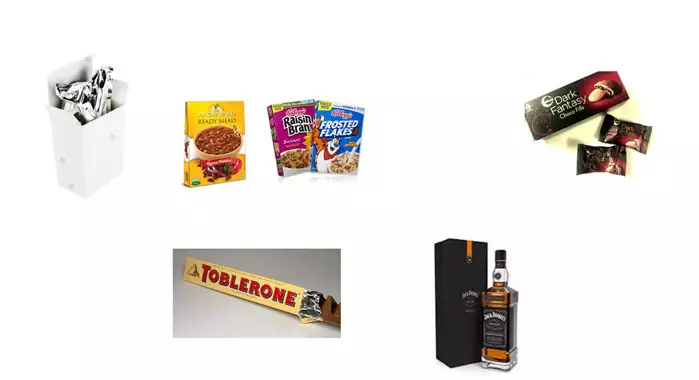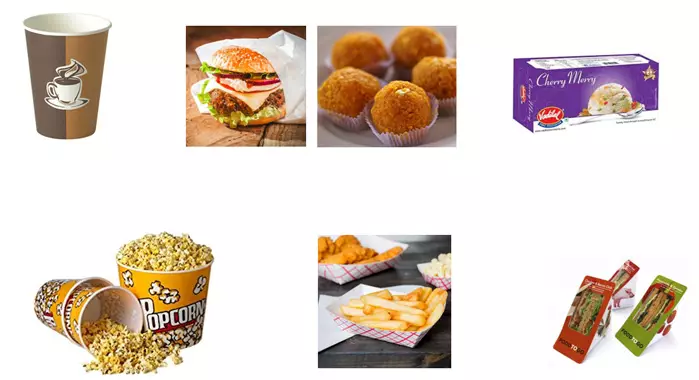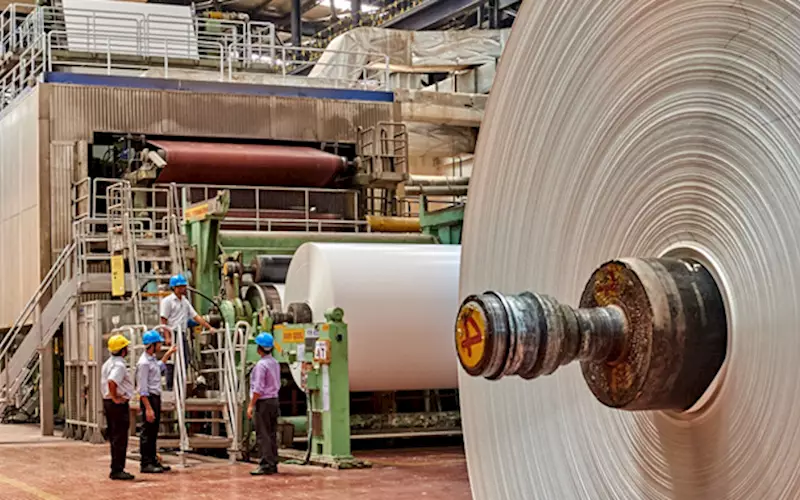Packaging Compliance - Connecting the Dots
SN Venkataraman, divisional head of marketing ITC Paperboards & Specialty Papers Division (PSPD) shares insights on the latest safety regulations and compliance for food packaging.
15 Sep 2017 | By Ramu Ramanathan
Food packaging is a trending topic. But there are two distinct worlds out there. One that thinks everything is hunky dory, and the other, which talks about the apocalypse.
Recent newspaper headlines - across the world - have been highlighting the grim news.
The six headlines for your benefit.
#Headline 1
Recall of Dutch waffles highly contaminated with mineral oils
Dutch waffles recalled in Belgium and the Netherlands due to contamination with MOAH and MOSH at levels of up to 190 ppm and exceeding 1,000 ppm, respectively; the exact source of contamination not known.
#Headline 2
Antimony in food packaging
Scientists measure antimony in plastic consumer products; find antimony in food trays, straws, and single-use drink bottles; presence attributed to its use as a catalyst in PET.
#Headline 3
Disposable plastic items banned in Delhi
Cutlery, bags, cups, and other single-use plastic items banned in Delhi by National Green Tribunal; ban sparked by concern over air and ocean pollution.
#Headline 4
Taiwan: Guidelines on nanomaterials in food packaging
Taiwanese Food and Drug Administration issues new guidelines for use of nanomaterials in food packaging; safety assessment and pre-market approval required.
#Headline 5
ECHA committees agree on restriction of 4 phthalates
ECHA’s Committees for Risk Assessment and Socio-Economic Analysis support proposal to ban endocrine disrupting phthalates DEHP, DBP, DIBP, and BBP in various articles; all 4 substances relevant for food contact materials.
#Headline 6
Contaminants in food
German Federal Institute for Risk Assessment (BfR) publishes special issue on contaminants in food; groups and origins of contaminants, risk perception and exposure estimation covered.
A quick glance on the streets is equally worrisome.
If one looks at food packaging at street vendors and hawkers - Newspaper - which is the most popular mode of packaging, one worries about the health of the consumers.
The discernible trends are the lead which is present in printing inks of the newspaper migrates into the food and contaminates it. How “the packaging” is a poor barrier against water, oil, grease etc. Plus the high chance of contaminants like dust, insects etc on account of pre-use and unhygienic storage.
The point is, the future has to have safe food packaging for all 1.3 billion Indian citizens.
 Types of paper and paperboard packaging indirect contact.
Types of paper and paperboard packaging indirect contact.
Safe paper/paperboard packaging – What matters?
There are two types of food contact: Direct vs. Indirect. And both impact the purity of the packaging material as well as the permitted manufacturing inputs.
In the production process what should matter is restricted levels of dioxins, phthalates, microbial content etc. And odour-free paper / board.
In addition, what matter is the interaction with inks, adhesives and solvents in the pack formation process as well as the migration of chemicals from inks / adhesives/ solvents to the food, and the crease and seal integrity during pack formation.
Also what matters is the distribution and final conditions of use – temperature, humidity, reheat etc. In this what matters is the effect of humidity and temperature during storage and transportation – adequate barrier to oxygen / water vapour, and compatibility with convection of microwave oven heating.
Packaging regulations
The packaging regulations, which manufacturers, converters, and brands have to pay heed to:
EUROPEAN UNION
Regulation (EC) No 1935/2004 on materials and articles intended to come into food contact.
Materials and articles, shall be manufactured in compliance with good manufacturing practice so that they do not transfer their constituents to food.
USA
US FDA CFR 21, §176.170: Components of paper and paperboard in contact with aqueous and fatty food.
US FDA CFR 21, §176.180: Components of paper and paperboard in contact with dry food.
GERMANY
BfR Recommendation XXXVI, Paper and board (2009) - Lists out Raw Materials permitted in the manufacture of paper / paperboard and their prescribed limits.
CHINA
National Food Safety Standard – GB 4806.8 2016 - Covers Food contact materials and articles, total migration, traceability, product information.
Registration, Evaluation, Authorisation and Restriction of Chemicals (REACH)
REACH places the burden of proof on companies. To comply with the regulation, companies must identify and manage the risks linked to the substances they manufacture / market in the EU
BRC Global Standard For Packaging & Packaging Materials
Specifies the product safety, quality and operational criteria that must be in place within a packaging manufacturing organisation in order for it to fulfil its obligations with regard to legal compliance and protection of the consumer.
Food Safety and Standards Authority of India (FSSAI)
2016- FSSAI advisory restricting the use of newspaper as food packaging material.
Newspaper inks contain multiple bioactive materials that can have negative health effects.
Paper and paperboards made of recycled material should be avoided as they may be contaminated with metallic contaminants, mineral oils and harmful chemicals.

Types of paper and paperboard packaging direct contact.
Evolution of paperboards for food packaging
Recycled fibre-based boards
These boards are made out of a mix of pre and post consumer waste paper, which is processed to remove contraries and odour, and in some cases the plastic coatings can also be removed by using a drum pulper. These boards – commonly referred as “Grey Back” and “White Back” boards are suited for economy and mass-market brand packaging. If food is to be packed in such grades, then only indirect contact is recommended where the primary pack is a pouch made with a suitable barrier. There have been issues of mineral oil migration caused by inks in the recycled fiber leaching through the film of the primary pouch and contaminating the food. Suitable barrier coatings can avoid mineral oil migration. To ensure complete safety it would be prudent to use virgin fiber based boards for food packaging.
Virgin fibre-based boards
These paperboards are made from virgin wood fibres sourced from sustainable plantations. Here there are two types of boards
a). Virgin fibre based Boards free from agents that can migrate into the food product
An example is OBA-free Boards. Optical Brightening Agents (OBAs) are chemicals used in paper manufacture to make the paper look brighter and are not suitable for direct food contact.
b). Virgin fibre based paperboards with barrier coatings
The barrier is usually a thin layer of LDPE. These paperboards are designed for cold chain and disposable packaging.
There are also papers / paperboards like WrapWell which have an emulsion coating for optimum grease resistance for packaging of oily or fatty foods
Virgin fibre-based paperboards with bio-based coating
With the stringent regulations on plastic packaging and increasing awareness of its environmental impact, brands are now looking for barrier boards without plastic coating. This has paved the way for paperboards like Omegabev and Omegabarr which have a bio-based coating, like PLA, and are fully biodegradable under composting conditions
The advantages of virgin fibre-based boards
The advantages are purity and no contaminants. There should be consistent quality plus stiffness and productivity. Also the virgin fibres give better strength and durability and does not affect the taste or smell of the food.
If made with select additives and/or barrier layers – these boards are suitable for direct food contact. For this purpose the boards should be made on lines where the process is also certified to international standards for direct or indirect food contact – GMP – BRC Global Standard.
Since the boards are renewable and Recyclable – the virgin fibres are sourced from sustainable plantations thereby providing livelihood to farmers while increasing the green cover.
Packaging safety at ITC
At ITC we follow good manufacturing practices. The steps we undertake are: only FDA & BfR approved chemicals are used.
The replacement of urea-based OBAs with solvent-based FDA approved OBAs - better organoleptic properties. Select grades are OBA-free.
Neutralization of microbial activity.
Since the regulations demand that the lubricants should also be food grade.
Magnetic separators in wood chipping process to remove metal contaminants. In addition, there is light ECF bleaching - the absence of elemental chlorine limits the level of Dioxins and Furans to less than 1 PPT (part per trillion).
Hot dispersion process eliminates plastics, contaminants, stickies in recycled printed material. Plus centri-cleaners to remove sand and dirt particles and elimination of Ammonia in the coating colours.
BRC Global Standard for Packaging & Packaging Materials guarantees hygiene management system. This means a strict eating and drinking policy; jewelry; protective clothing; pest control; workmen and factory floor sanitation etc
Rigorous testing
Bacterial count in paperboard. Then there is gas chromatography for measuring chemical presence of minute order. Plus migration tests accompanied by Dioxins & urans test.
Finally, there is electronic nose test (detecting solvent retention) and Robinson test for Odour.
European Standard Sensory Analysis check see if a material is suitable for direct contact with chocolate and confectionery products. The packaging material under test and some grated milk chocolate are stored at ambient temperature and controlled relative humidity in a closed glass jar in the dark. After 72 hours, the flavour of the chocolate is compared with that of a reference sample.











 See All
See All